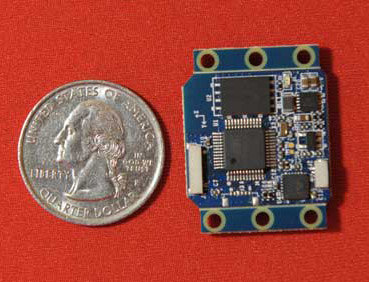
Some sports focus on the pure motion of an athlete: the gymnast performing a floor exercise, say, or the sprinter dashing down the track. Other sports require the skilled use of a piece of equipment. A baseball player wields a bat, a quarterback throws a football, a golfer swings a driver. The difference between a star athlete and weekend duffer can be measured in angles as small as a couple of degrees and velocities measured in small fractions of meters per second.
With practice and innate skill, an athlete can learn to achieve those motions, but it is hard for the naked eye of a coach or trainer to see the difference in real time. Because few athletes have access to the specialized motion-capture cameras and three-dimensional image analysis needed to augment the coach’s eyes, an athlete might wind up spending long hours honing techniques that are poor at best, or even counterproductive.
But what eyes can miss, MEMS can see. Among microelectromechanical systems are inertial sensors, which were first developed for automotive and military applications. They are tiny accelerometers and angular rate gyros that can be combined to form a complete inertial measurement unit. An IMU detects the three-dimensional motion of a body in space by sensing the acceleration of one point on the body as well as the angular velocity of the body. Incorporated in our IMU design are a microcontroller for analog-to-digital conversion and a low-power radio frequency transmitter for wireless data transfer to a computer. The resulting design is as small as a postage stamp and has a mass of merely three grams; a rechargeable lithium-ion battery adds just 1.5 grams to the unit. To our knowledge, we developed in our lab the smallest wireless IMU yet produced.
When this small, but rugged device is mounted on or embedded within sports gear, such as the shaft of a golf club, the IMU provides the essential data needed to resolve the motion of that equipment.
This technology—and sound use of the theory of rigid body dynamics—is now being developed and commercialized as the ingredients in new sports training systems. It won’t be too long before MEMS-based hardware and sophisticated software combine to enable athletes at any level to get world-class training.
To read more about MEMS and their role in sports training, view the original ASME article by ME Professor Noel Perkins, Kevin King, Ryan McGinnis, and Jessandra Hough. Perkins is the Donald T. Greenwood Collegiate Professor and Arthur F. Thurnau Professor of Mechanical Engineering. McGinnis and Hough are doctoral students in ME.
